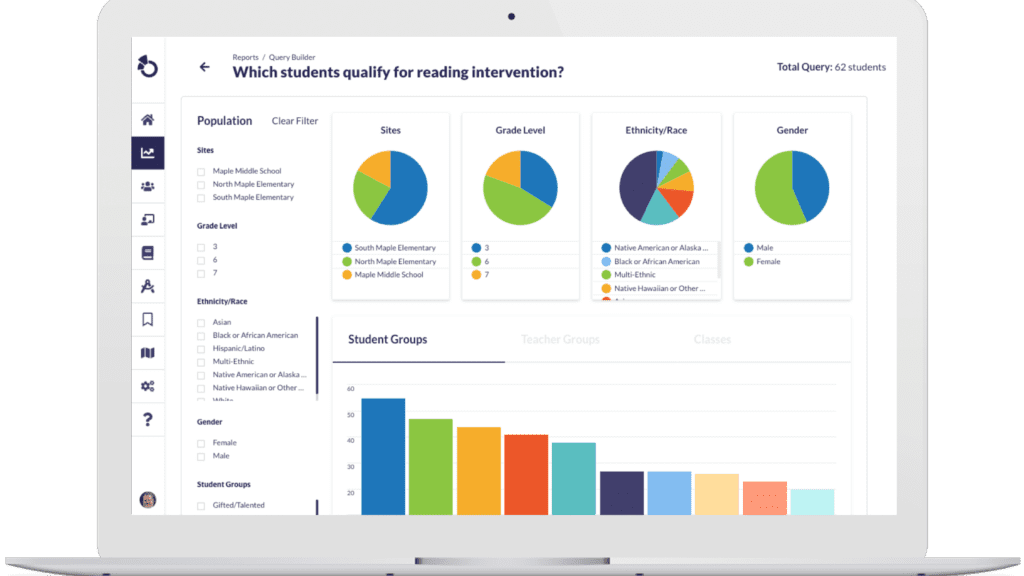How to Make Alternative Grading Work For Your School: Lessons Learned From One Journey
By: Kendell Hunter
Ontario Christian School (California) didn’t flip a switch. They built momentum.
In this session, Director of Academics LuAnna Odom and teachers Katie Anker and Amanda Salazar walk through their multi-year move to standards-referenced grading (SRG): separating academics from learning behaviors, aligning rubrics across grades, protecting weekly team time, and bringing families along with clear, positive language. You’ll see what changed in classrooms right away, what took a year (or three), and how small, intentional steps add up to big culture shifts.
Ontario Christian’s Journey at a Glance
Ontario Christian School in Ontario, California, serves students from pre-kindergarten through high school. In 2024, the school partnered with Otus after seeking a more intuitive standards-referenced grading tool than what their traditional SIS could provide. Their readiness for a tool that could support the important work teachers were doing with assessment and grading followed a clear progression.
- Years 1-3: Research + pilots
Small teams test SRG practices (rubric, common scales, feedback cycles). Parent info sessions begin.
- Years 4-6: Team alignment
Weekly PLC time (“late-start Wednesdays”) becomes sacred. Vertical alignment tightens; power standards and shared rubrics take shape.
- Years 7-9: Schoolwide coherence
Academics and work habits are reported separately, and a common 1–4 proficiency scale is used across grades. Family communication normalizes the approach — and with consistency finally in place, Otus becomes the system of record to manage it all reliably and efficiently.
Watch the webinar:
Three Ways You Can Make Alternative Grading Work for Your School Today
Pace the change, protect the time
What they did: Leadership scheduled and guarded weekly time to build common rubrics, agree on power standards, and norm evidence of mastery. Admins set agendas, then stepped back so teachers could be candid, iterate, and own the work.
Why it works: Consistency grows from routine collaboration, not one-off PD. Teachers need a safe space to compare student work, refine scales, and plan re-teaching or extensions.
Try this: Lock one standing PLC block each week. Use a simple cadence: What’s the target? How will we know? What do we do for students not there yet? What about for students already there?
How Otus makes it happen 👉 Shared rubrics and centralized standards make weekly PLC discussions easier. Teachers can see common data and plan reteaching without exporting or syncing from their SIS.

Make assessments authentic and recyclable
What they did: K-8 teams built shared rubrics tied to standards (e.g., a lab rubric used in grades 6-8 with rising expectations). In primary grades, spiraled checks and second-chance demonstrations shifted the focus from points to proof of learning.
Why it works: Students (and families) see a clear connection between what’s taught and how mastery is measured. Reusable rubrics reduce workload and sharpen feedback.
Try this: Pick one high-leverage task per subject (lab, claim-evidence-reasoning, reading fluency, problem-solving) and co-create a 1-4 rubric you’ll all use.
How Otus makes it happen 👉 Rubrics live year to year, ready to reuse or adapt. Teachers save countless hours creating new templates and can instantly view student progress on each standard.
Separate academics from habits, but talk about both
What they did: Report content mastery and work habits/character as distinct lines (e.g., collaboration, communication, timeliness). Families were prepped through multiple info sessions and plain-language explanations (a “2” equals progress toward mastery, not a “C”).
Why it works: Standards communicate learning more accurately; behavior feedback is clearer and more actionable. Anxiety drops when students see growth opportunities instead of point deficits.
Try this: Start with two categories on every major task: “What did students learn?” and “How did they learn?” Report each separately, even if your SIS shows a single overall mark.
How Otus makes it happen 👉 Academic and behavioral data stay distinct but connected in one place. Reporting is simpler, and families get clearer communication than SIS gradebooks can offer.

Ontario Christian’s Keys to Lasting Change
- Ontario Christian focused on vertical alignment without uniformity, using the same proficiency scale across grades while allowing expectations to grow with age.
- They emphasized feedback cycles over single shots, using early attempts to guide instruction and later ones to show mastery.
- A strong family communication plan helped avoid percentage talk and instead centered conversations on what students can do and can show.
- Finally, their leadership approach made a difference. Administrators provided structure and agendas, then stepped back to let teams collaborate honestly and vulnerably.
Watch the full conversation below to see how Ontario Christian made alternative grading work, and how Otus helps to keep it going.
Related Resources
Request a demo!
See exactly how Otus can help your school accelerate student growth and improve student outcomes – all while saving educators time.




